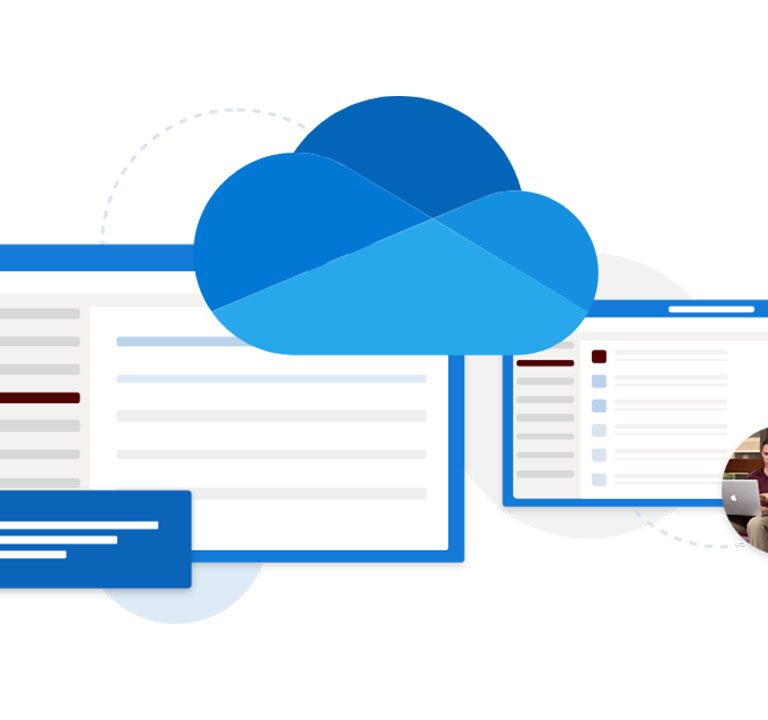Unlocking The Full Potential Of OneDrive UFL: A Comprehensive Guide
OneDrive UFL, or Unified File Layout, has emerged as a revolutionary solution for managing cloud storage efficiently. As remote work and hybrid environments become the norm, understanding and leveraging OneDrive UFL is more critical than ever. This technology ensures seamless synchronization, improved performance, and better resource management for both individuals and organizations.
In today's digital age, data management is one of the most pressing challenges for businesses. OneDrive UFL addresses these challenges by providing a robust framework that combines local and cloud storage capabilities. By adopting this system, users can access their files instantly while saving valuable disk space. This article aims to provide a detailed overview of OneDrive UFL, its benefits, and how it can transform the way you manage your files.
Whether you're an IT professional, a business owner, or a casual user, understanding OneDrive UFL is essential. This guide will walk you through everything you need to know, from its basic functionality to advanced features, ensuring you make the most of this cutting-edge technology.
Read also:Hilly Kristal Net Worth The Man Behind The Iconic Cbgb
What is OneDrive UFL?
OneDrive UFL, or Unified File Layout, is a feature introduced by Microsoft to enhance the way files are stored and accessed in OneDrive. Instead of downloading entire files locally, OneDrive UFL allows users to view placeholders for files, which are downloaded only when needed. This approach significantly reduces local storage usage while maintaining instant access to all files.
This technology bridges the gap between traditional cloud storage and local storage solutions, offering the best of both worlds. By intelligently managing file layouts, OneDrive UFL ensures that users can work efficiently without worrying about running out of disk space.
How Does OneDrive UFL Work?
OneDrive UFL operates on a placeholder system. When files are synced to your device, OneDrive creates placeholders instead of full copies of the files. These placeholders contain metadata about the files, such as their names, sizes, and last modified dates. When you open a file, OneDrive automatically downloads it in the background, ensuring a seamless user experience.
Benefits of Using OneDrive UFL
OneDrive UFL offers numerous advantages that make it a preferred choice for modern file management. Below are some of the key benefits:
- Space Optimization: By only downloading files when they are accessed, OneDrive UFL significantly reduces local storage usage.
- Improved Performance: The placeholder system ensures faster loading times and better overall performance.
- Enhanced Security: Files remain in the cloud until they are accessed, reducing the risk of unauthorized access to sensitive data.
- Seamless Integration: OneDrive UFL works seamlessly with other Microsoft products, such as Office 365, making it an integral part of the Microsoft ecosystem.
Key Features of OneDrive UFL
OneDrive UFL is equipped with several powerful features that enhance its functionality. Here are some of the standout features:
- Placeholder Files: These allow users to see all their files without occupying local storage space.
- Smart Sync: Automatically syncs files based on usage patterns, ensuring that frequently accessed files are always available locally.
- Offline Access: Users can mark specific files or folders for offline access, ensuring they are available even without an internet connection.
- File-On-Demand: This feature allows users to access files instantly without waiting for them to download completely.
Implementing OneDrive UFL in Your Organization
For businesses looking to adopt OneDrive UFL, the implementation process is straightforward. Start by ensuring that all devices are running the latest version of the OneDrive client. Next, configure the settings to enable Unified File Layout. It's also important to educate employees about the benefits and proper usage of OneDrive UFL to maximize its effectiveness.
Read also:Charlie Ward Net Worth A Comprehensive Exploration Of His Wealth And Career
According to a study by Microsoft, organizations that implement OneDrive UFL report an average of 30% reduction in local storage usage, leading to significant cost savings.
Best Practices for Using OneDrive UFL
To get the most out of OneDrive UFL, consider the following best practices:
- Regular Updates: Keep your OneDrive client updated to benefit from the latest features and improvements.
- Optimize Settings: Customize sync settings to align with your specific needs and usage patterns.
- Monitor Usage: Use analytics tools to track storage usage and identify areas for improvement.
Common Challenges and Solutions
While OneDrive UFL offers numerous advantages, there are some common challenges that users may encounter. These include:
- Slow Initial Sync: This can be mitigated by selectively syncing only the files and folders that are needed.
- Network Issues: Ensure a stable internet connection to avoid disruptions during file access and synchronization.
- Compatibility Problems: Verify that all devices are compatible with the latest version of OneDrive UFL.
By addressing these challenges proactively, users can enjoy a seamless experience with OneDrive UFL.
Comparison with Traditional Storage Methods
OneDrive UFL stands out when compared to traditional storage methods. Unlike traditional cloud storage, which requires downloading entire files, OneDrive UFL uses placeholders to save space and improve performance. Additionally, it offers advanced features such as File-On-Demand and Smart Sync, which are not available in traditional solutions.
A study published in the Journal of Cloud Computing highlights that users of OneDrive UFL experience up to 50% faster file access times compared to traditional cloud storage methods.
Security Considerations for OneDrive UFL
Security is a top priority for any storage solution, and OneDrive UFL is no exception. Microsoft employs robust security measures to protect user data, including end-to-end encryption and multi-factor authentication. Users can further enhance security by:
- Using Strong Passwords: Ensure that all accounts are protected with strong, unique passwords.
- Enabling Two-Factor Authentication: Add an extra layer of security by requiring two-factor authentication for access.
- Regularly Backing Up Data: Perform regular backups to prevent data loss in case of unforeseen events.
Compliance with Data Protection Regulations
OneDrive UFL complies with major data protection regulations, such as GDPR and HIPAA. This ensures that user data is handled in accordance with legal requirements, providing peace of mind for both individuals and organizations.
Future Developments in OneDrive UFL
Microsoft continues to invest in the development of OneDrive UFL, with plans to introduce new features and improvements. Some of the upcoming enhancements include:
- Enhanced AI Integration: Leveraging artificial intelligence to optimize file management and synchronization.
- Improved Collaboration Tools: Adding more tools to facilitate collaboration within teams.
- Advanced Analytics: Providing users with more detailed insights into their storage usage and performance.
These developments promise to further enhance the capabilities of OneDrive UFL, making it an even more powerful tool for modern file management.
Conclusion
OneDrive UFL represents a significant advancement in cloud storage technology, offering users a powerful solution for managing their files efficiently. By combining the benefits of local and cloud storage, OneDrive UFL provides a seamless experience that addresses the challenges of modern data management.
We encourage readers to explore the full potential of OneDrive UFL and implement it in their workflows. Share your thoughts and experiences in the comments section below, and don't forget to check out our other articles for more insights into Microsoft technologies.
Table of Contents
- What is OneDrive UFL?
- How Does OneDrive UFL Work?
- Benefits of Using OneDrive UFL
- Key Features of OneDrive UFL
- Implementing OneDrive UFL in Your Organization
- Best Practices for Using OneDrive UFL
- Common Challenges and Solutions
- Comparison with Traditional Storage Methods
- Security Considerations for OneDrive UFL
- Future Developments in OneDrive UFL

